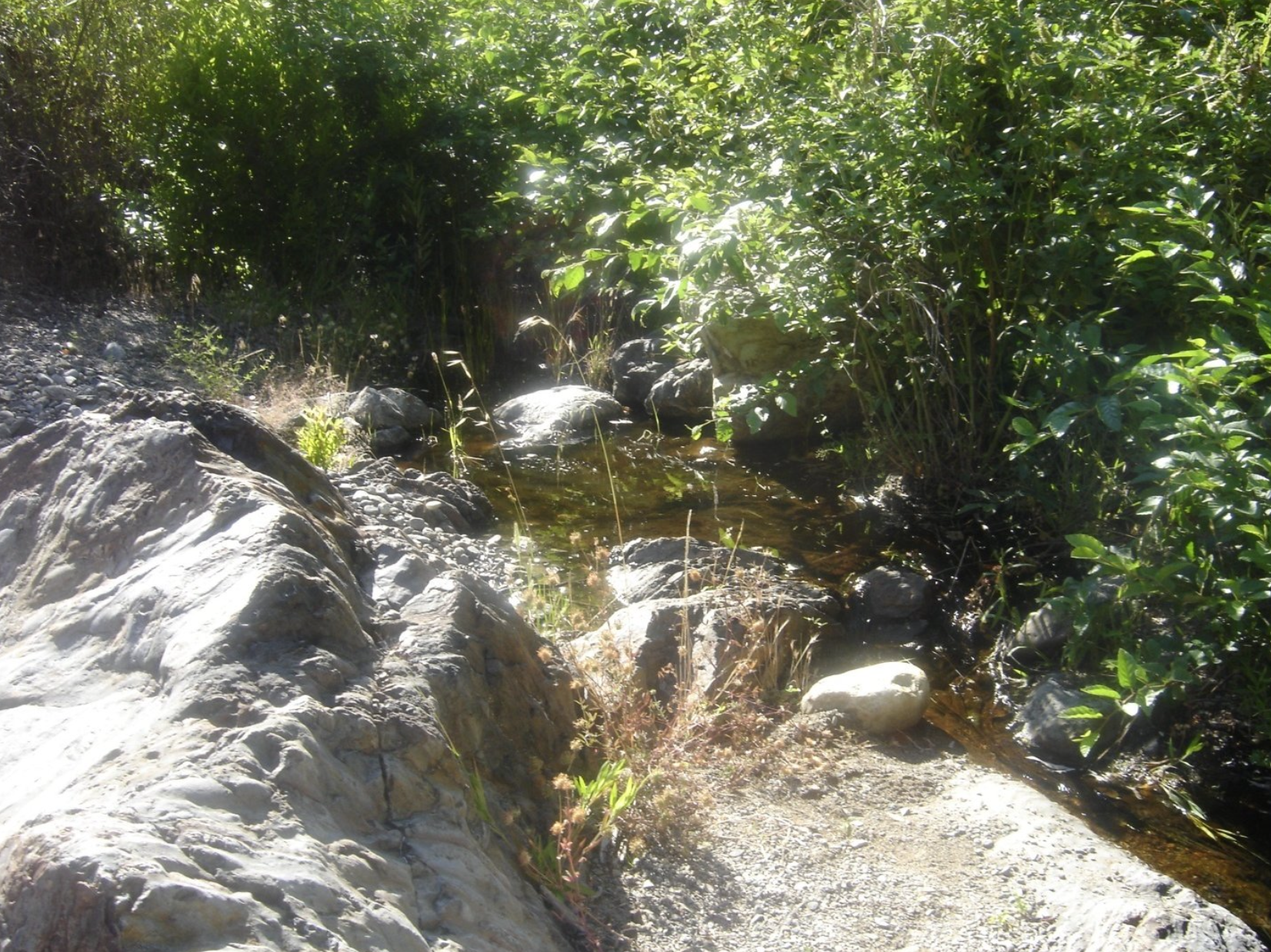Resistant Bedrock formations upstream of the Clavey River Confluence passing through the cliff along Clavey Falls altered the path of the Mainstem Tuolumne River. Further upstream the river is fairly straight for a while so the water in the stream builds up momentum. When it reached the resistant formation, the path of least resistance caused the river to turn slightly left to break through the rock barrier. However, now that the river has broken through, the momentum causes some of the water to continue straight running into the tributary bar. Many large rocks and gravels make up the foundation of the tributary bar creating a high porosity media through which the water can flow. The water that hits the tributary bar straight on infiltrates into the bar and creates a head gradient to the lower end of Clavey Falls facilitating lateral groundwater flow through the tributary bar. Part way down the bar, the subsurface flow daylights and created a little channel. Plants and trees have grown up around this microhabitat. Biota such as frogs and insects has made this area their home. Water also trickles out over some bedrock formations underlying the bar. Indentations made by erosion in the bedrock created small ponds reminiscent of tide pools. In these little pools the water warms against the bedrock and localized primary productivity increases greatly.

